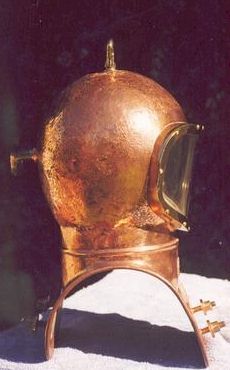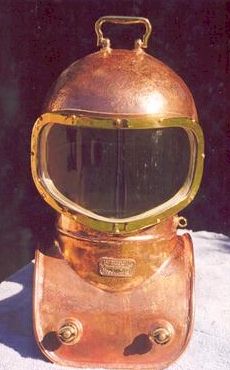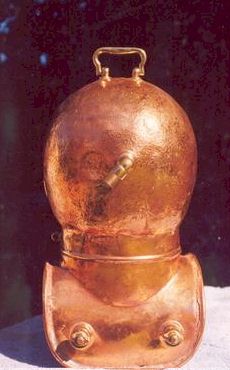


Introduction
Schrader aimed for the civilian market with this helmet. They delivered to steamship companies, yacht owners and all others desiring to make brief examinations at shallow water depths.
|
|
|
|
The helmet is made of spun copper. The large front window is made of shatter-proof glass curved to conform of the shape of the helmet. Lead weights in front and back can be securely bolted to the helmet (In this case they are both missing). A channel built into the headpiece distributes the incoming air about the face.
|
|
|
The picture
is a bit blurred but you can clearly see there is a little extra tag
bolted on the Schrader tag. |
In their 1935 catalog, Schrader published safety remarks. We feel they are still applicable today.
"As manufacturers of diving apparatus, we cannot see any technical reason for a diver to remove his helmet while submerged, but this procedure has often been followed in the spirit of fun and amusement.
Experiments conducted by the US Navy, have defenitely proved that to remove a diving helmet or any respiratory apparatus under water and swim to the surface is a highly dangerous procedure which may result in serious and permanent injury to the diver. By such a procedure a diver may not only contract caisson disease, but is subjecting himself to the more dangerous effects of air embilism. If for some reason such removal is necessary the ascent should be made as slowly as possible. The use of an anchored line for descend is recommended. Submersions for unlimited periods without decompression is applicable only to depths less than 36 feet. In greater depth decompression should be resorted to during ascent, irrispective to the time submerged."